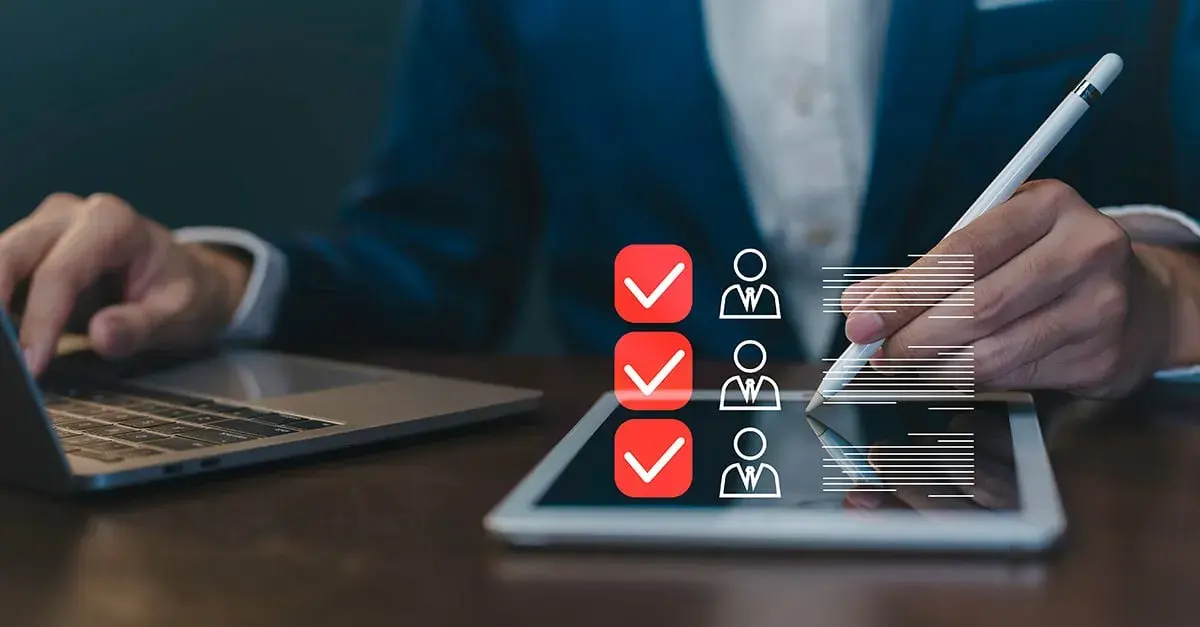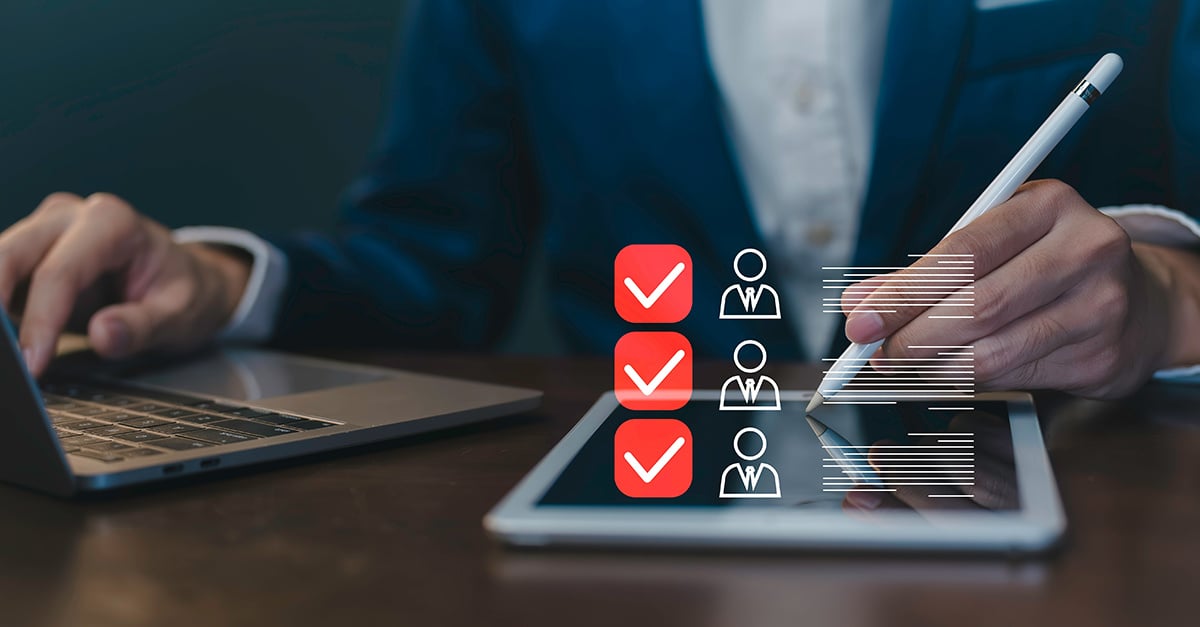Atlas Systems Named a Representative Vendor in 2025 Gartner® Market Guide for TPRM Technology Solutions → Read More

Vendor Security Management: Best Practices for Reducing Risk


8 min read | Last Updated: 27 Nov, 2025
TL;DR
- VSM components essential: Vendor security reviews pre-access, reporting/analytics for trends, contract management with SLAs/KPIs, document centralization, risk mitigation/remediation for compliance (OCC, PCI-DSS, HIPAA).
- Four key best practices: Classify vendors by risk profile, don't overlook fourth parties, nurture collaborative partnerships, continuous monitoring for changing postures.
- Five major challenges: Regulatory/compliance evolving requirements, manual processes cause inefficiencies, supply chain attacks target APIs, varying vendor risk profiles need customization, limited technical expertise.
- Technology powers VSM: AI/ML detect irregularities and predict risks, RPA automates repetitive tasks, NLP analyzes unstructured text, blockchain creates tamper-proof ledgers ensuring integrity.
Modern organizations depend on a complex web of third-party vendors, from cloud providers and payment processors to HR platforms and marketing tools. These partnerships are critical for growth and innovation, but they also expand the attack surface, creating new avenues for cyber threats, compliance failures, and reputational damage.
Vendor Security Management (VSM) provides the framework to identify, monitor, and mitigate security risks across your vendor ecosystem. It ensures third and fourth parties meet your organization’s security and compliance standards, helping prevent data breaches, business disruptions, and costly regulatory violations.
This guide explores what VSM is, the common challenges it presents, and the best practices for addressing them.
What is Vendor Security Management?
Vendor security management is a component of the broader vendor risk management (VRM) process and focuses on vendors’ cybersecurity postures to ensure they meet security requirements that protect your organization's data and systems.
Vendor security management helps protect your organization from compliance violations, business disruptions, financial losses, and reputational damage resulting from vendor relationships. It's the strategies you take to ensure vendors meet your organization’s security standards, like conducting security assessments, penetration tests, audits, and enforcing security clauses in contracts.
Key Components of Vendor Security Management
Many organizations manage third-party risks with separate or incomplete processes. This approach may be effective in the short term, but it ultimately yields ineffective results in the long term. Here are the key elements of vendor security management:

Vendor security reviews
A vendor security review is the process of evaluating a new vendor before granting them access to your systems, data, or networks. You assess whether a vendor's security controls meet your organization's standards for protecting sensitive information and maintaining operational resilience.
Reporting and analytics
Detailed reports and analytics help your company understand vendor risk trends and patterns, and areas for improvement. Advanced analytics tools offer predictive insights, helping you anticipate and prepare for future risks.
Contract management
This involves internal planning, negotiating service-level agreements (SLAs), drafting, approving, and executing the contract. Define KPIs, regulatory requirements, and protect your organization’s sensitive information with data protection clauses that cover confidentiality and breach notification. Additionally, schedule a mid-term review prior to the renewal period.
Document Centralization
A document repository provides a single source of truth for all vendor-related documents, boosting efficiency, security, and compliance. It ensures data integrity, simplifies regulatory reporting, and automates workflows for better risk assessment and mitigation throughout the vendor relationship lifecycle.
Risk mitigation and remediation
Develop strategies for identifying the right vendors to do business with and tracking them effectively. A vendor security management platform with advanced risk analytics provides the intelligence you need to ensure compliance with regulations such as OCC mandates, PCI-DSS, HIPAA, and the HITECH Act.
Best Practices for Effective Vendor Security Management
Apply these best practices in your organization for effective vendor risk management:
Classify vendors based on their risk profile
Have a process for screening vendors to understand their risk profile. Vendors that handle sensitive or confidential information are considered high risk and require additional attention and controls. Classification helps you prioritize efforts and resources and effectively manage the potential risks of high-risk vendors.
Don’t overlook fourth parties
Most third-parties have vendors called fourth parties—the people they get products and services from. Those vendors can introduce risks you may be unaware of because you don’t monitor them. Contractually bind your third parties to inform and get approval for any fourth-party involvement. Manage high-risk fourth-parties as part of the third-party ecosystem.
Nurture collaborative vendor partnerships
Your vendor security management program can only be successful if third parties are on board. Build collaborative relationships with them and align on shared risk objectives and mitigation strategies. Have open lines of communication, clarify mutual expectations, and regularly review your risk management strategies. Hold regular check-in meetings with key vendors to facilitate ongoing dialogue about changes that may impact compliance or service delivery.
Continuous monitoring
Vendor risk management isn’t “set-and-forget.” Vendor security postures can change over time as new vulnerabilities emerge. Continuous monitoring helps you detect and address risks before they escalate. Use automation to maintain visibility over your growing, complex vendor ecosystem and to ensure timely remediation of identified threats.
Train your team and vendors regularly
Effective vendor security management hinges on the collaboration between internal stakeholders and third parties. This collaboration can be hindered by information silos, technical challenges such as poor risk visibility, and even resource constraints.
Foster a culture of vigilance and preparedness with role-specific training guides or workshops. Have customized training sessions for your third parties and procurement, IT, legal, and compliance teams. Add a standard orientation or onboarding manual to your security management software.
Common Challenges in Vendor Security Management
Vendor security reviews are often hindered by challenges that can impact operational efficiency. Addressing these issues is crucial for a successful vendor security management program.
Regulatory and compliance challenges
As digital data becomes increasingly integrated into business operations, cybersecurity and data privacy regulations also evolve. Third parties must comply with these regulations, and your organization may be liable for any damages resulting from their non-compliance. Establish a compliance framework to ensure vendors comply with set regulations.
Manual vendor security review processes
Manual review processes often rely on spreadsheets, emails, and manual follow-ups, resulting in inefficiencies, errors, and delays. They lengthen review cycles, delay vendor onboarding, strain internal resources, and can make assessments outdated before completion. Use technology to automate repetitive tasks like evidence collection, filling questionnaires, and risk scoring..
Evolving cybersecurity threats
Supply chain attacks have increased in recent years as cybercriminals target vendor access credentials and APIs. Your third parties often operate outside your direct security controls but have privileged access to your systems. If not continually monitored, they can expose your organization to data breaches, malware attacks, and grant unauthorized access to your systems. Perform comprehensive due diligence on new vendors before onboarding them and verify their cybersecurity certifications. Additionally, use continuous monitoring tools to detect and mitigate threats in real-time.
Managing multiple vendors with varying risk profiles
You can’t use the same review process for every vendor, as they differ in key ways, like in the sensitivity of the data they handle, the criticality of their services to your operations, and the potential impact if a security incident were to occur. Customize the depth and frequency of security reviews, performing more rigorous risk assessments on high-risk vendors.
Limited technical expertise
If your organization doesn’t have a dedicated security team with deep expertise in security management, technical assessments won’t be comprehensive, and vendor controls will be insufficient. Your organization will be unable to comprehend complex threats and implement effective security measures. This will result in insufficient reviews, missed risks, and increased vulnerability to breaches.
Tools and Technologies for Vendor Security Management
Vendor security management tools use different technologies for risk assessment, continuous monitoring, and incident response. Here are the top ones:
AI and Machine Learning (ML)
AI processes large amounts of vendor data, like security reports and compliance records, to detect irregularities or potential risks that humans might miss. Machine Learning models research historical vendor incidents to predict potential risks. They learn as new data flows in, helping companies catch vulnerabilities before they escalate.
Robotic Process Automation (RPA)
Some VSM tools use software robots to automate repetitive vendor management tasks, such as collecting compliance evidence, sending questionnaires, or verifying certificates. RPA offers a consistent and efficient approach that minimizes human error and reduces costs.
Natural Language Processing (NLP)
This technology analyzes and interprets large amounts of unstructured text data, automating and enhancing key processes like continuous monitoring and risk assessment. It converts text from contracts, audit reports, or SOC 2 certificates into actionable data, helping security teams identify and mitigate third-party risks more efficiently and accurately.
Blockchain technology
Blockchain creates tamper-proof ledgers for tracking vendor interactions, assessments, and compliance data, ensuring process integrity. It enhances visibility into the supply chain, minimizing vendor-related risks and improving overall security posture.
Case Studies: How Vendor Security Breaches Can Have Far-Reaching Consequences
Volvo (Miljödata HR software supplier breach)
In September 2025, Volvo disclosed that employee data was stolen by cybercriminals after its vendor, Miljödata, which handles HR services, suffered a ransomware attack. The attackers stole sensitive information such as names and SSNs. Unsecured third parties are a serious attack vector and can have a negative impact, like multi-million-dollar settlements and brand damage.
AT&T (cloud vendor breach)
In 2023, AT&T was fined $13 million by the FCC due to a data breach on one of its cloud providers. Hackers accessed the personal and account data of almost 9 million customers. AT&T admitted the vendor didn’t follow good data management practices and agreed to enhance its supply chain integrity.
Strengthen Your Vendor Security Management with ComplyScore®
As your organization scales and the number of third-party vendors increases, they become more challenging to manage. While it’s impossible to anticipate every possible threat that can occur, the right technology can help mitigate risks and support your vision for growth and success.
ComplyScore® makes vendor security management easier by using AI to automatically assess and prioritize vendor risks. It continuously monitors the security practices of your third parties and highlights vulnerabilities that need attention. You can focus on the biggest risks, fix problems faster, and stay compliant.
Top enterprises use ComplyScore® to enhance their vendor risk management processes. Book a free demo today and discover why.
Frequently Asked Questions
1. What is the difference between vendor management and vendor security management?
Vendor management encompasses the entire relationship with third-party vendors, covering operational, financial, and security aspects. Vendor security management is a subset of vendor management that focuses on assessing, monitoring, and mitigating vendor risks.
2. How do I assess the security posture of a new vendor?
To assess a new vendor's security posture, categorize them based on their criticality to your organization. Perform a formal risk assessment and analysis of their security controls and establish an ongoing monitoring process to track them throughout the entire life cycle.
3. Which compliance frameworks should vendors adhere to?
The key compliance frameworks vendors should adhere to include ISO/IEC 27001, SOC 2, and NIST Frameworks.
4. How often should vendor security assessments be performed?
Vendor security reviews should be conducted quarterly or biannually for high-risk vendors, annually for medium-risk vendors, and every 18-24 months for low-risk vendors.
5. What are the key metrics for evaluating vendor security risk?
Key metrics for evaluating vendor security risk include regulatory compliance, cybersecurity posture, financial stability, and incident response capabilities.
.png?width=869&height=597&name=image%20(5).png)

.png?width=300&height=175&name=Rectangle%2034624433%20(2).png)








.png?width=645&height=667&name=Widgets%20(2).png)










.webp)

.png)













